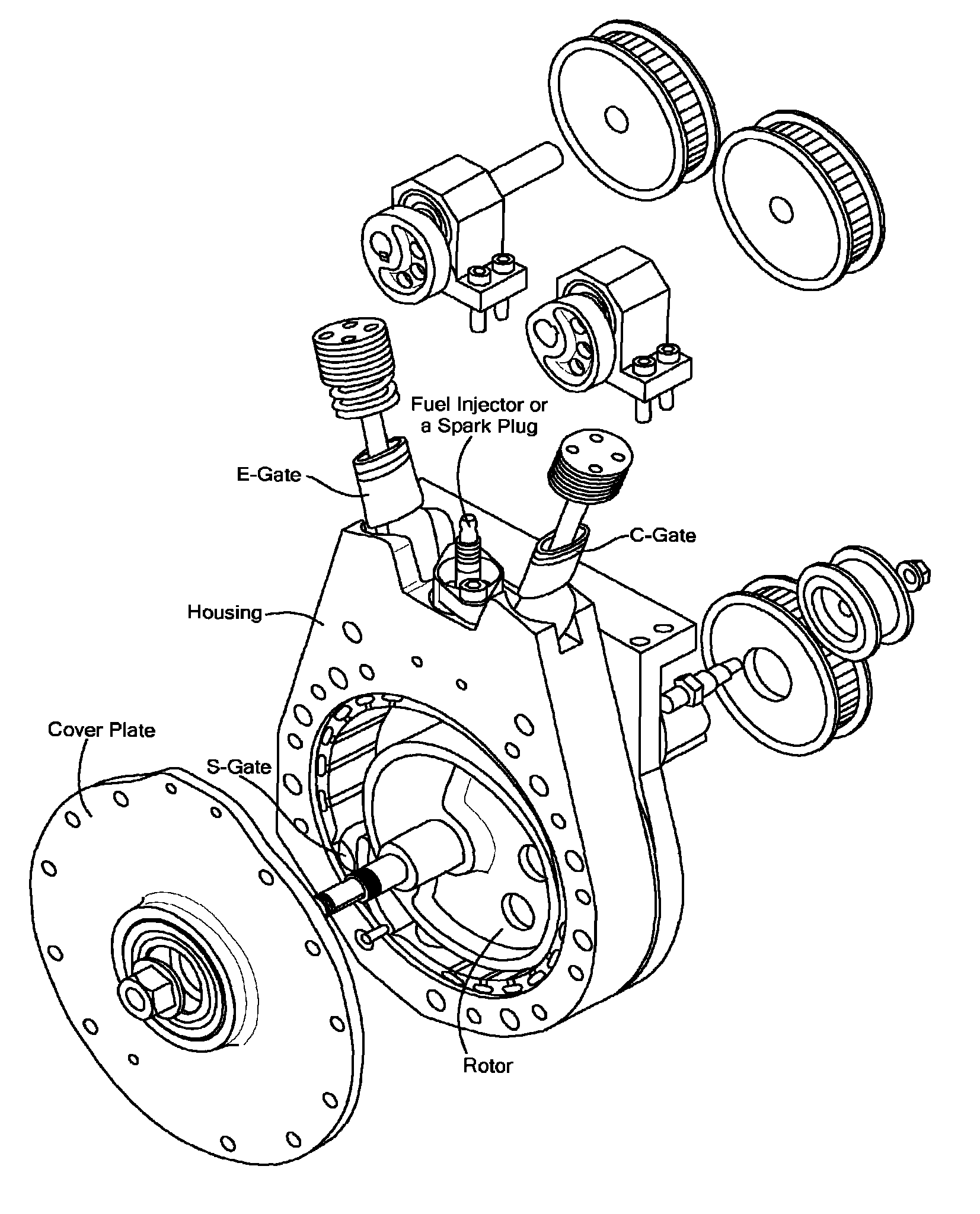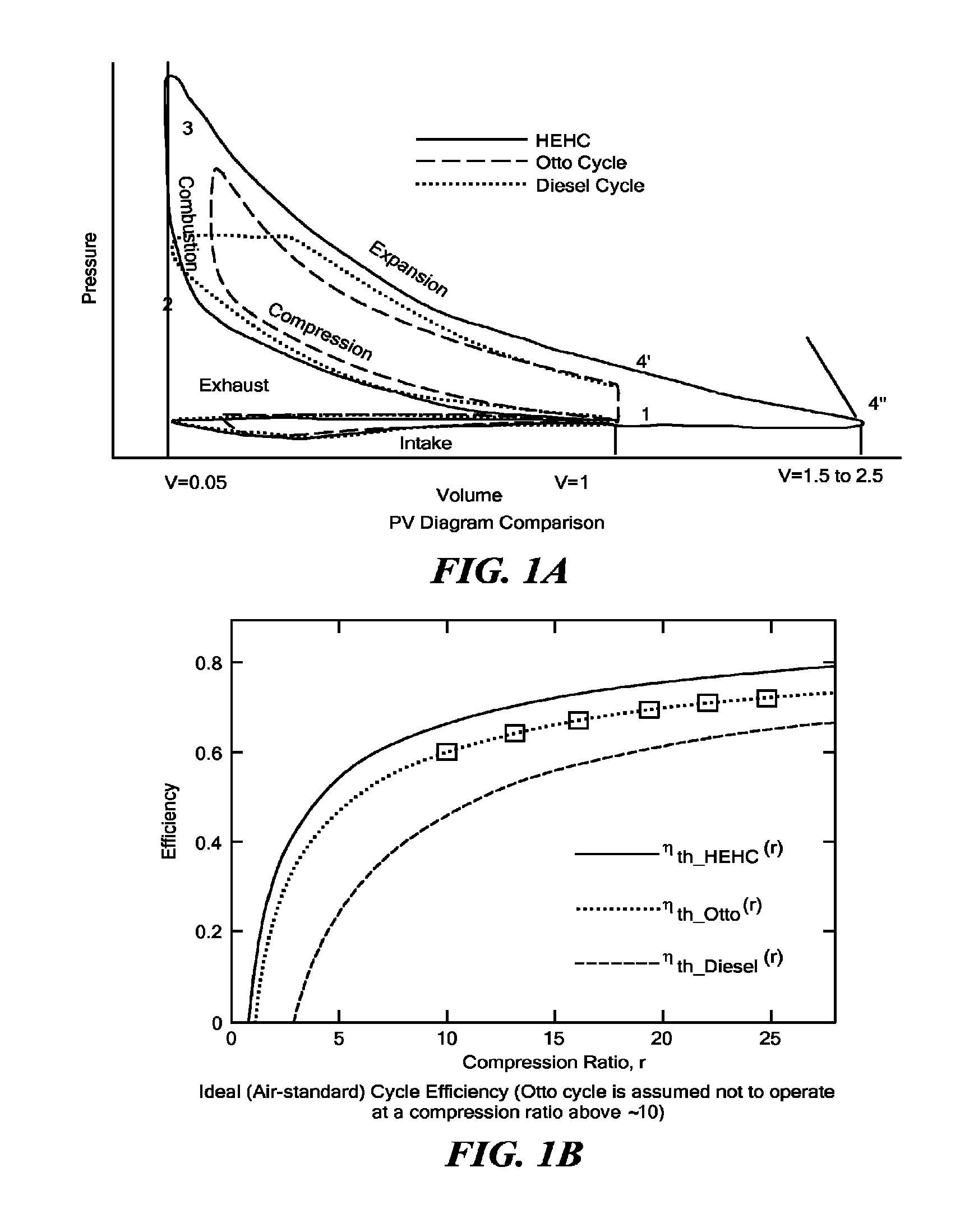Isochoric heat addition engines and methods
a technology of isochoric heat addition and combustion engine, which is applied in the direction of liquid fuel engine, machines/engines, mechanical equipment, etc., can solve the problems of reducing the efficiency of engines designed to complete one cycle, preventing them from achieving higher levels of efficiency, and causing high compression in the compression chamber, so as to reduce the tangential flow of fluid and improve sealing
- Summary
- Abstract
- Description
- Claims
- Application Information
AI Technical Summary
Benefits of technology
Problems solved by technology
Method used
Image
Examples
Embodiment Construction
Definitions
[0071]As used in this description and the accompanying claims, the following terms shall have the meanings indicated, unless the context otherwise requires:
[0072]A “rotor” is a structure, rotatably mounted in a housing that transmits torque, developed as a result of combustion, to a mechanical output.
[0073]A “gate” is a movable structure, for partitioning a volume, that is periodically or continuously in contact with a member, such as a rotor, that is moving with respect thereto. A gate may move with a rotating or translating motion, and such motion need not substantially change the volume of a relevant cavity.
[0074]A “vane” is a movable structure, motion of which causes displacement of a volume, that also has a partitioning function and is periodically or continuously in contact with a member, such as a rotor or a housing that is moving with respect thereto.
[0075]A “piston” is a mass moving linearly with respect to a housing in which it is located and that transmits forc...
PUM
 Login to View More
Login to View More Abstract
Description
Claims
Application Information
 Login to View More
Login to View More - R&D
- Intellectual Property
- Life Sciences
- Materials
- Tech Scout
- Unparalleled Data Quality
- Higher Quality Content
- 60% Fewer Hallucinations
Browse by: Latest US Patents, China's latest patents, Technical Efficacy Thesaurus, Application Domain, Technology Topic, Popular Technical Reports.
© 2025 PatSnap. All rights reserved.Legal|Privacy policy|Modern Slavery Act Transparency Statement|Sitemap|About US| Contact US: help@patsnap.com



